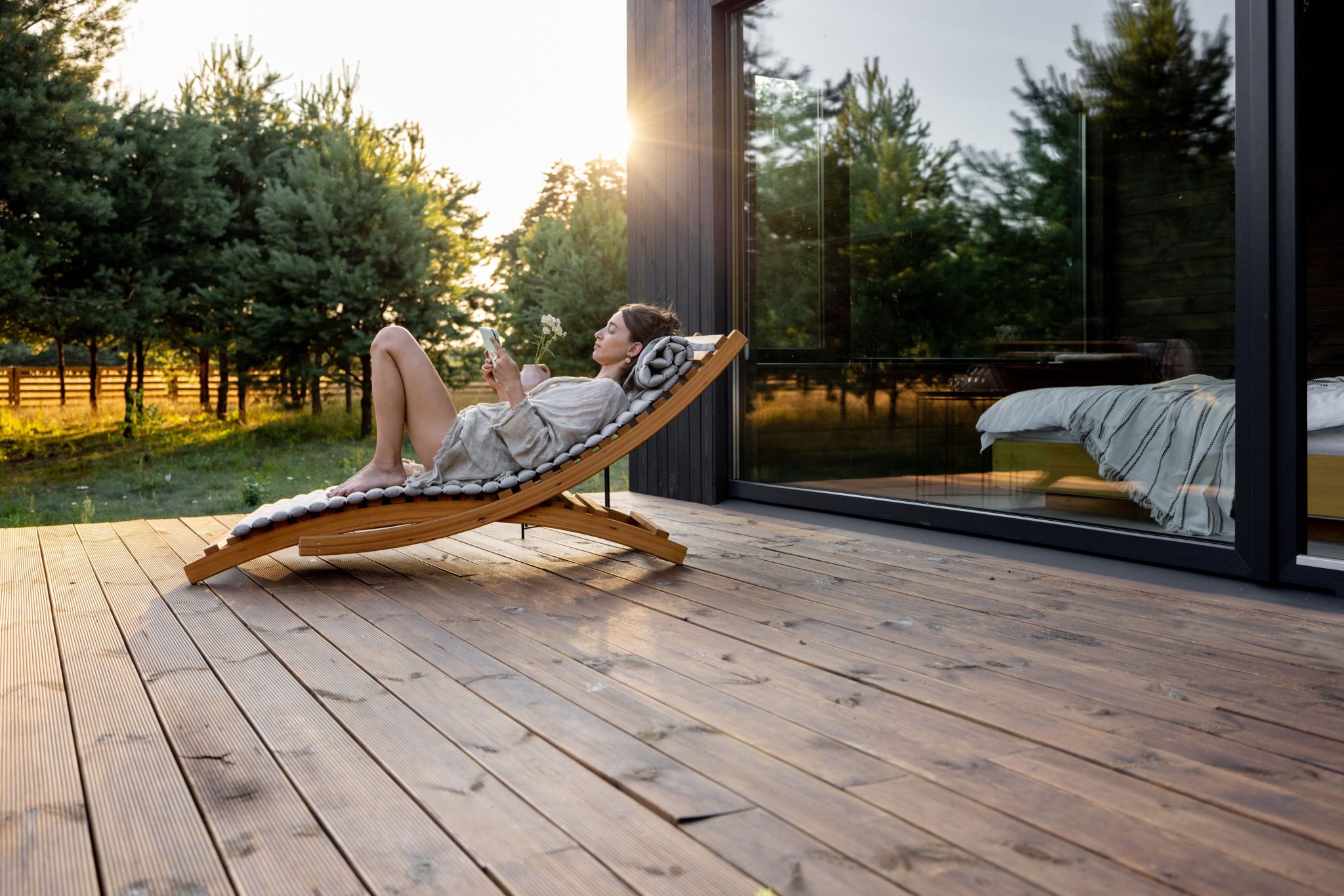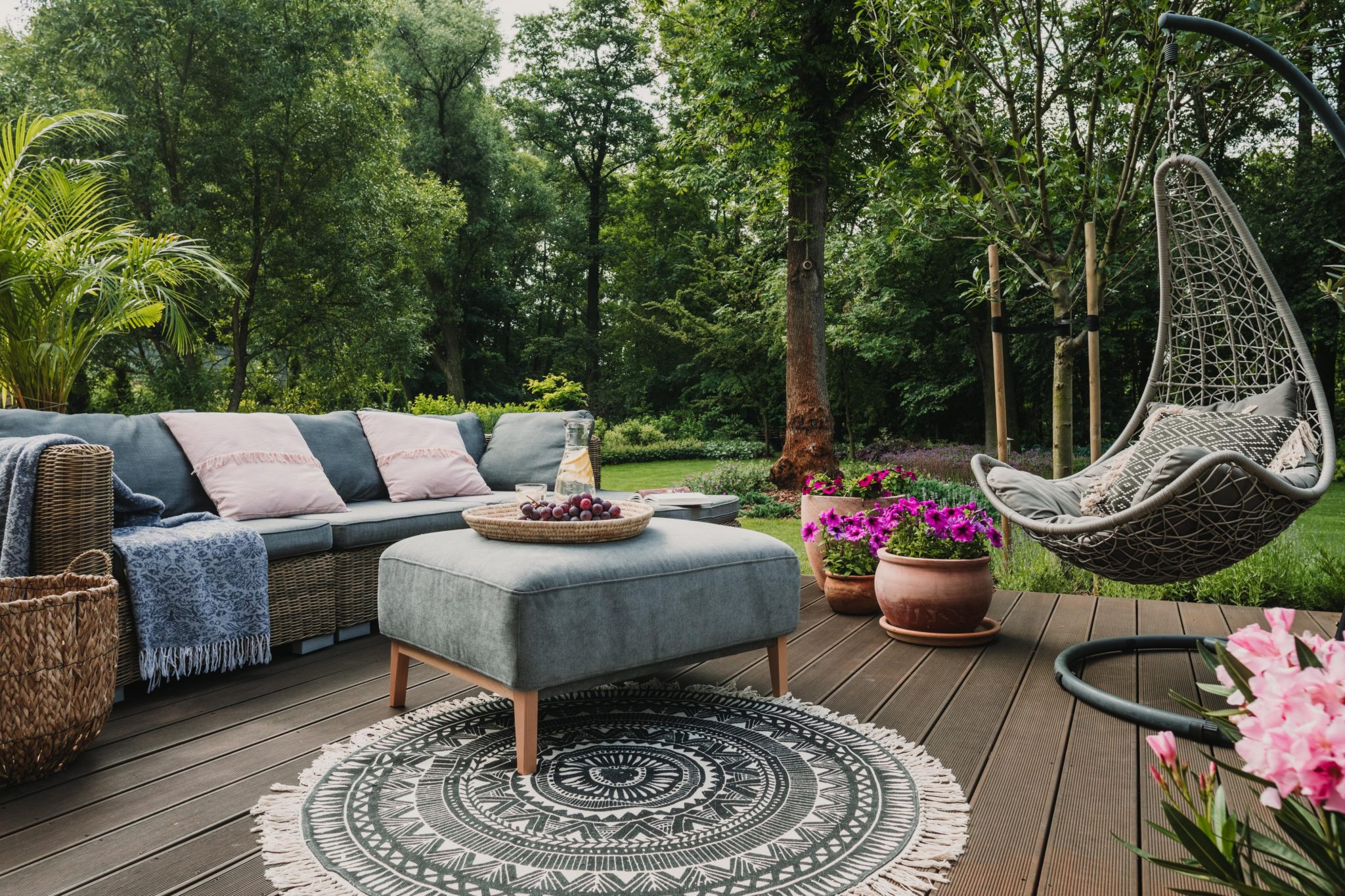Table of Contents
Building a patio is a dream project for many homeowners, but as with any major home addition, there will be a lot of planning involved. If you’ve decided to build one over a weekend, you need to take a step back and consider a few things before going ahead with the construction.
1. The location
Where would you want your patio to be? Most homeowners would put their patio at the front or the back of the house, but it’s actually mostly just up to your preference. The important thing is that patios must be located somewhere spacious enough while still providing you with some degree of privacy from onlookers.
If you prefer more shade, you can put it where the sun hits less, or somewhere next to trees with plenty of shade. However, if you’re planning to have a place where you can sunbathe in the mornings, a patio built at the side of your home facing the sun rise should be the best area as it will get plenty of sunlight throughout the day. If you’re having trouble finding the right spot, you could get recommendations from an experienced patio builder. Once you’ve chosen a place, you can mark its outline with string, stakes, or spray paint until it’s time to finalize the base of your patio.
2. The size
You’ll have to determine the size of your patio before you start gathering your building tools. Your patio’s maximum size will be limited by the amount of space available in the spot you chose. However, you have to keep in mind that bigger patios will cost you more in terms of labor and materials.
Your patio’s size should also depend on what you expect to do in it. If you expect to accommodate a lot of guests on a regular basis, you may want to go for a bigger patio. If you’re planning on using it mostly for private time, then a smaller design would be a more practical option.
3. The base
Like most buildings and high-rise structures, your patio must have a stable base. A professional will most likely use a crusher run, but gravel, concrete, and blacktop are also good alternatives for the sub-base. Whichever material you choose, never skimp on it so your patio won’t sink or slide a few years down the road just because the sub-base is loose or have poor quality.
Patio bases are often made with flagstone or paver tiles, which are sturdy and affordable. Flagstone is commonly used for walls, so they should be strong enough for walkways and patios. If you’re building the patio yourself, paver tiles are also relatively easy to install.
4. The materials and equipment
Building a patio requires a lot of materials and equipment. For starters: you’re going to be doing a lot of digging, so it’s best to have a shovel or spade. Other materials and equipment you need to include in your checklist are:
- Wheelbarrow
- Garden hose
- Paver base
- Landscape fabric
- Builder’s or leveling sand
- Two PVC pipes that fit your patio’s length
- Plate compactor
- Polymeric sand
- 2×4 boards
Other materials needed for your patio will depend on whether it will have extra features, such as a small firepit or grilling area. If you plan to hire professional patio builders, you can always ask them what else to get. In many cases, the patio builders themselves will source their own materials.
5. The building codes
Before you lay down your patio’s foundation, you need to know your area’s building codes. You may also require a building permit before constructing your patio. You might end up getting fined if you fail to comply with building regulations.
You’ll have to check if you need your county’s permission if you plan to build a large patio or one that’s enclosed. Freestanding patios might need a permit as well. Coordinate with your local council to ensure you meet all the requirements before you start building. If you’re working with a contractor, they will usually offer to handle the paperwork for you.
6. The furniture
Decorating your patio is bound to be an exciting activity. You’ll need pieces of furniture like seats and a coffee table to create a comfortable space. If you used up most of your budget for building the patio, you could save money by buying second-hand pieces, which tend to sell for much lower than their brand-new counterparts. Reclaimed materials such as spare bricks and wood can also add some variety to the patio’s surface, which helps liven up the area.
Patios will look more attractive with some plants around them. Try arranging container plants if you don’t have the space for an entire garden. Various textiles and statement furniture can also add a pop of color to a plain patio. Test your creativity and plan your patio decorations, preferably while you’re still preparing construction materials.
7. The roof or lighting
You may want to complete the look of your patio by adding a roof or an awning. Roofs are both a protective and aesthetic choice. Consider setting up a roof if you prefer to stay on your patio without getting bothered by rain or intense sunshine. It will require more materials, but it’ll keep your patio safer from damage by natural elements.
Lighting is crucial for a patio if you intend to relax and dine on it at night. Various kinds of outdoor lighting are available, like spotlights, festoons, or fairy lights. Pick the ones that fit your tastes and enhance the design of your patio. You won’t have to fret about bumping into furniture with pretty and bright patio lights around you.
Conclusion
Patios are an excellent addition to your home because they are versatile and they also enhance the look of your property. Although building a well-designed patio takes a lot of effort and resources, you can expect to get a lot of value out of it just because of the sheer utility that a patio can provide.









